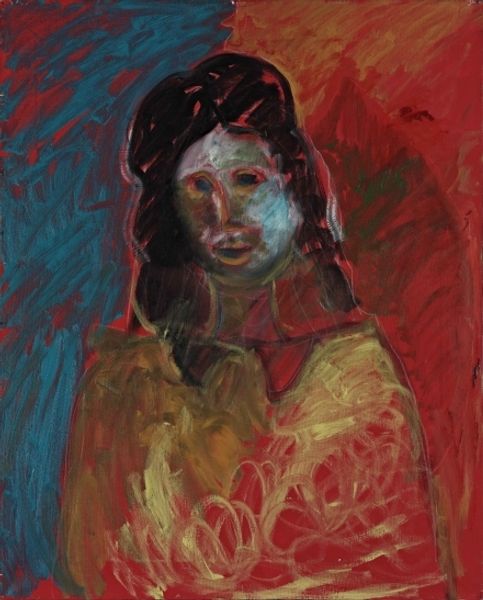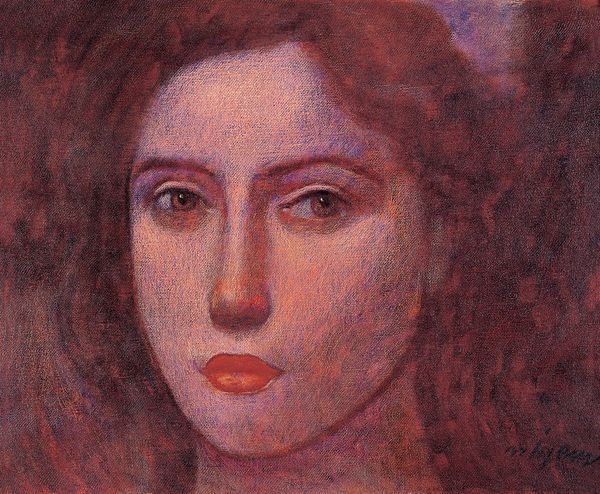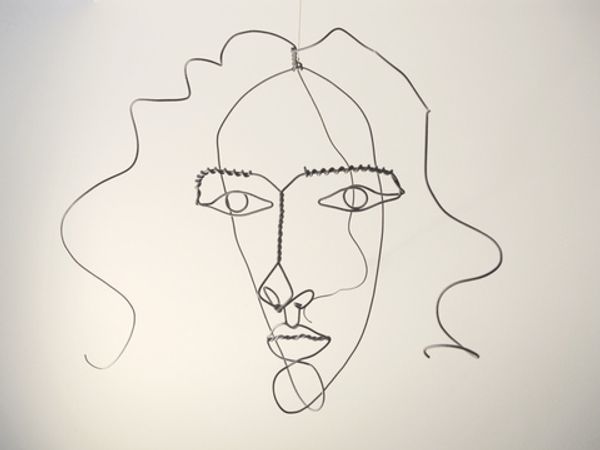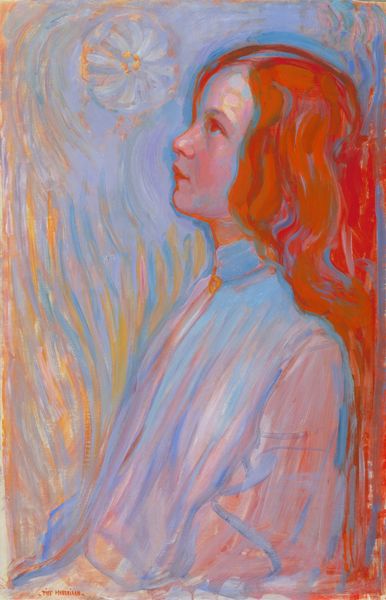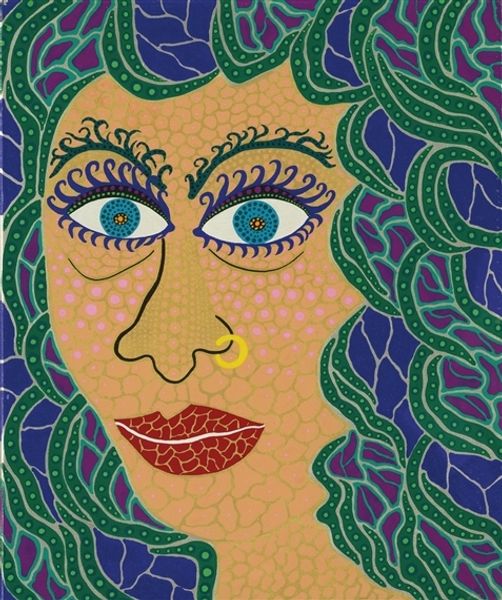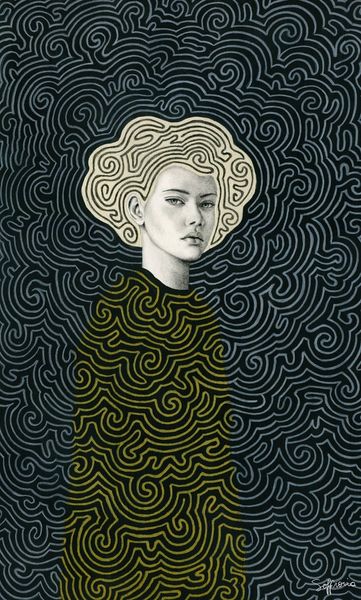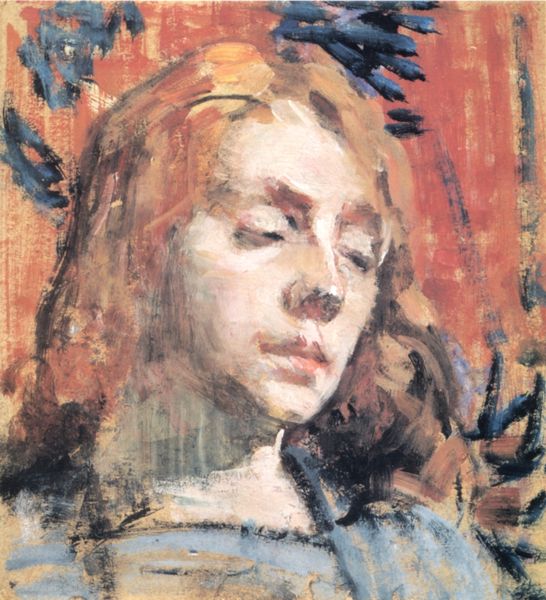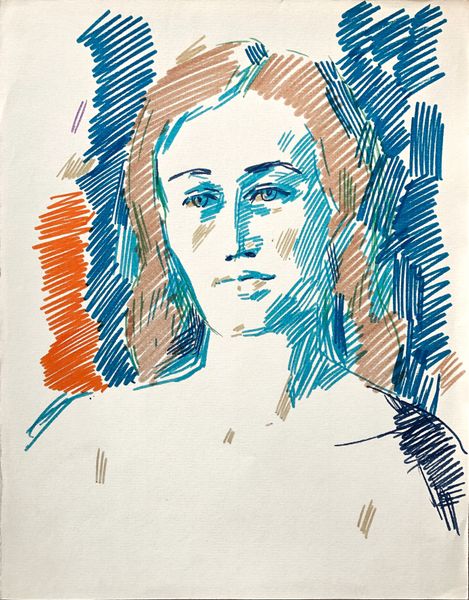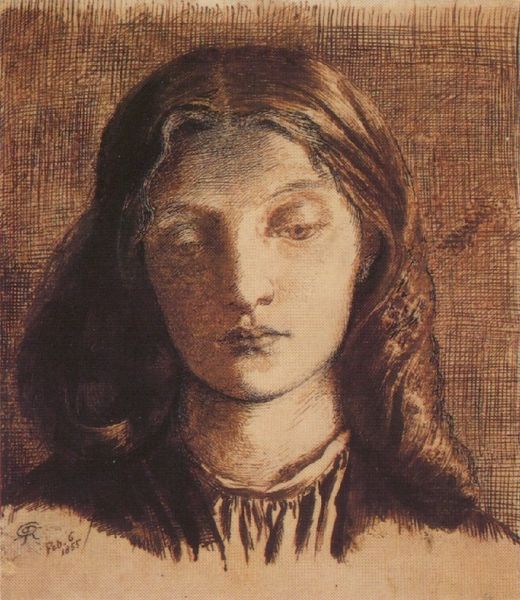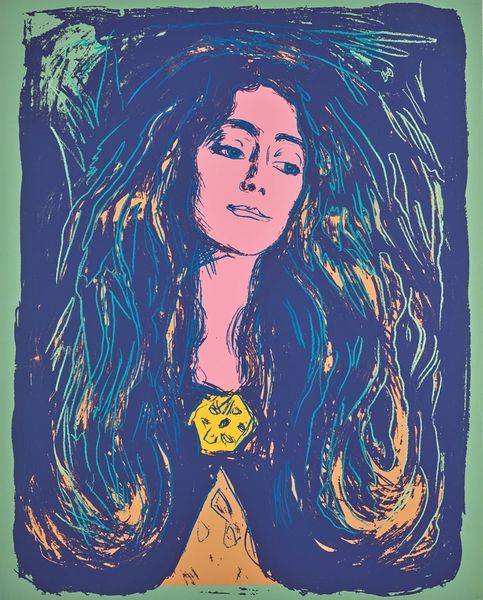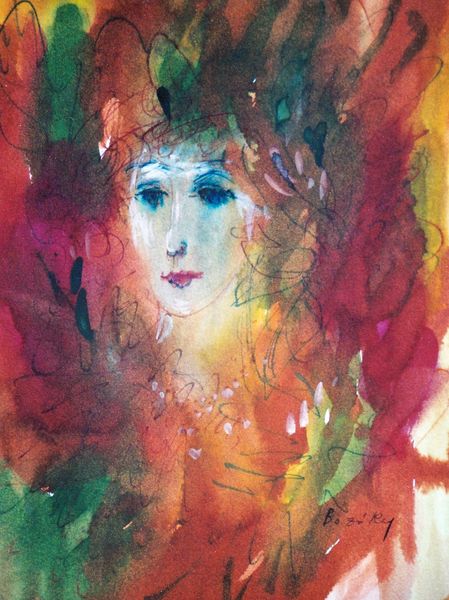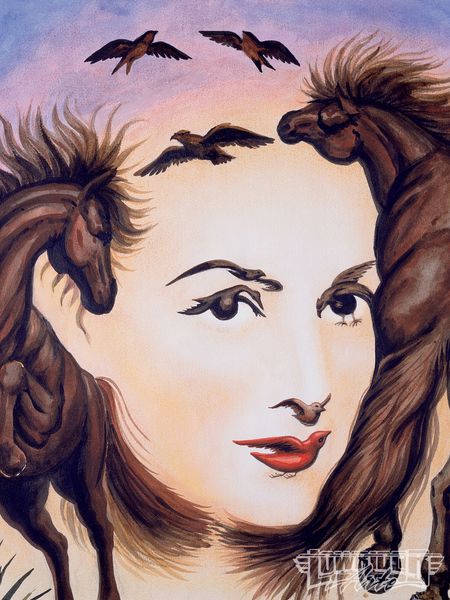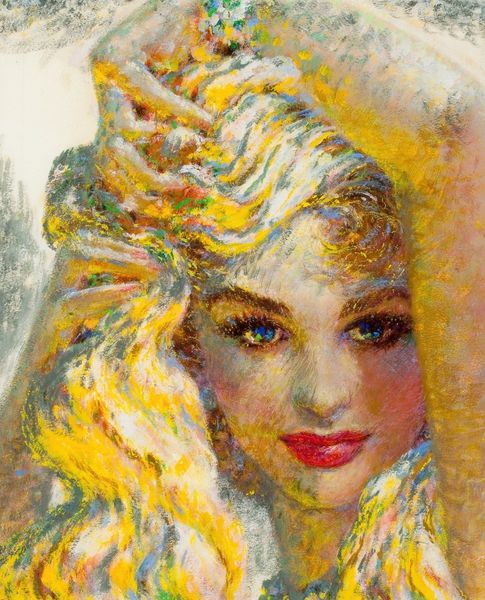
Copyright: Modern Artists: Artvee
Editor: So this is Andy Warhol’s "Birth of Venus" from 1984, done in acrylic. The colors are so striking. It has a flattened effect to the entire composition which removes any spatial depth that may reference the classical painting. What catches your eye in this piece? Curator: Formally, Warhol's use of line, particularly the heavy outlines, acts as a critical structure in delineating the boundaries of form, especially in the rendering of the hair, which becomes almost abstract. Editor: Abstract how? Curator: It distances us from the Renaissance ideal. By deconstructing and then reconstructing Botticelli's iconic form, Warhol forces us to consider Venus not just as an art historical reference but as a collection of shapes, colors, and lines that have a different emotional tonality, even an indifference. Notice also the palette— the peach against the cadmium reds—do you perceive a semantic play here, a contrast perhaps, that wasn't present in Botticelli? Editor: Yes, it’s not ethereal anymore! It's very direct. How does this affect our reading? Curator: By flattening the image, simplifying the colors, and using that emphatic outline, Warhol renders "Venus" a commodity, echoing the mass production techniques of his era and implicitly critiquing the commodification of beauty and art itself. This treatment of line, color and form—it's an essential tool. Editor: This makes me look at it completely differently. I was just seeing the surface. Thank you for breaking this down for me! Curator: My pleasure. It is vital we question the way aesthetic codes shape meaning, regardless of familiarity with subject matter or technique.
Comments
No comments
Be the first to comment and join the conversation on the ultimate creative platform.
